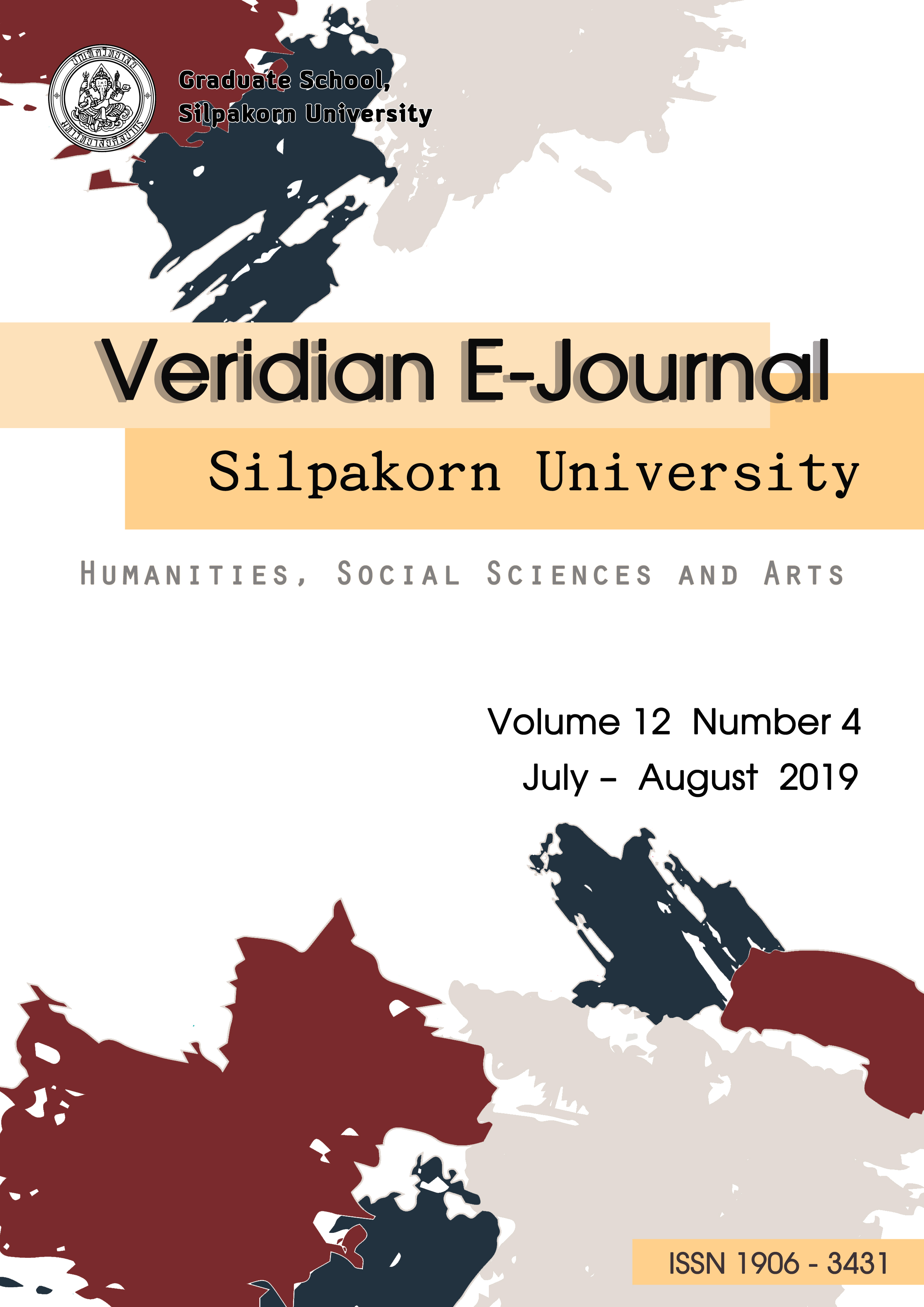รูปแบบห้องเรียนอัจฉริยะแบบผสมผสาน 4.0 โดยใช้การเรียนรู้ร่วมกัน เพื่อส่งเสริมทักษะการคิดเชิงนวัตกรรมของนักศึกษาระดับปริญญาตรี มหาวิทยาลัยราชภัฏบ้านสมเด็จเจ้าพระยา (Blended Smart Classroom 4.0 Model using Collaborative Learning to Enhance Innovative Thinking skill for Undergraduate Students at Bansomdejchaopraya Rajadhat University)
Main Article Content
Abstract
การวิจัยนี้มีวัตถุประสงค์เพื่อ 1) พัฒนารูปแบบห้องเรียนอัจฉริยะแบบผสมผสาน 4.0 โดยใช้การเรียนรู้ร่วมกันเพื่อส่งเสริมทักษะการคิดเชิงนวัตกรรมของนักศึกษาระดับปริญญาตรี มหาวิทยาลัยราชภัฏบ้านสมเด็จเจ้าพระยา 2) เพื่อศึกษาผลของการใช้รูปแบบห้องเรียนอัจฉริยะแบบผสมผสาน 4.0 โดยใช้การเรียนรู้ร่วมกันฯ 3) เพื่อรับรองรูปแบบห้องเรียนอัจฉริยะแบบผสมผสาน 4.0 โดยใช้การเรียนรู้ร่วมกันฯ ดำเนินการวิจัยและพัฒนา 3 ระยะ ได้แก่ ระยะที่ 1 พัฒนารูปแบบห้องเรียนอัจฉริยะแบบผสมผสาน 4.0 โดยใช้การเรียนรู้ร่วมกันฯ ระยะที่ 2 ศึกษาผลการใช้รูปแบบฯ ระยะที่ 3 ประเมินเพื่อรับรองรูปแบบห้องเรียนอัจฉริยะแบบผสมผสาน 4.0 โดยผู้ทรงคุณวุฒิ 5 ท่าน กลุ่มตัวอย่างเป็นนักศึกษาปริญญาตรีสาขาวิชาเทคโนโลยีและสื่อสารการศึกษา คณะครุศาสตร์ ปีการศึกษา 2560 จำนวน 55 คน สุ่มเป็นกลุ่มทดลอง 25 คน กลุ่มควบคุม 30 คน เครื่องมือที่ใช้ในการวิจัยประกอบด้วย 1) BSRU Smart classroom 2) แบบประเมินทักษะการคิดเชิงนวัตกรรม 3) แบบประเมินผลงานนวัตกรรม 4) แบบประเมินความพึงพอใจของนักศึกษา และ5) แบบรับรองรูปแบบห้องเรียนอัจฉริยะแบบผสมผสาน 4.0 โดยใช้การเรียนรู้ร่วมกันฯ สถิติที่ใช้ในการวิเคราะห์ข้อมูล ได้แก่ ค่าเฉลี่ย ส่วนเบี่ยงเบนมาตรฐาน และการทดสอบ t-test
ผลการวิจัยพบว่า 1) รูปแบบห้องเรียนอัจฉริยะแบบผสมผสาน 4.0 โดยใช้การเรียนรู้ร่วมกันประกอบด้วย 5 องค์ประกอบ และ 5 ขั้นตอน องค์ประกอบของรูปแบบ ได้แก่ เทคโนโลยีห้องเรียนอัจฉริยะ การบริหารจัดการ การเข้าถึงแหล่งทรัพยากร การปฏิสัมพันธ์และระบบทดสอบ ขั้นตอนของรูปแบบฯ ประกอบด้วย การเรียนแบบผสมผสาน ฝึกคิดฝึกทำแลกเปลี่ยนเรียนรู้ สร้างสรรค์นวัตกรรม นำเสนอผลงานและประเมินผล2) ผลการศึกษาการใช้รูปแบบฯ หลังเรียนกลุ่มทดลองมีทักษะการคิดเชิงนวัตกรรมสูงกว่ากลุ่มควบคุม อย่างมีนัยสำคัญทางสถิติที่ระดับ .05 ผลการประเมินผลงานนวัตกรรม คะแนนเฉลี่ยของกลุ่มทดลองอยู่ในระดับดีเยี่ยม ส่วนกลุ่มควบคุมมีคะแนนอยู่ในระดับดี กลุ่มทดลองมีความพึงพอใจต่อรูปแบบฯ ระดับมากที่สุด 3) ผู้ทรงคุณวุฒิ
มีความเห็นว่ารูปแบบห้องเรียนอัจฉริยะแบบผสมผสาน 4.0 โดยใช้การเรียนรู้ร่วมกันมีความเหมาะสมระดับมากที่สุด และสามารถนำไปปฏิบัติในสถานการณ์จริงได้
The purposes of this research were to study 1) develop a blended smart classroom 4.0 model using collaborative learning to enhance innovative thinking skill of undergraduate students at Bansomdejchaopraya Rajadhat University. 2) examine a blended smart classroom 4.0 model. and 3) evaluation of the model by five experts. The research method comprised of three steps as follows: step 1: develop the model; step 2: examine the effect of the model; and step 3: evaluation of the model by five experts. Fifty-five students at Bansomdejchaopraya Rajadhat university in the academic year of 2017 were participated in the study. The students were divided into two groups i.e. Experimental group and Control group. Experimental group there were 25 students while control group there were 30 students. Instruments in this research consisted of BSRU Smart classroom application, innovative thinking skills form, Innovation evaluation form, and certificate form. The data were analyzed by average, standard deviation, and t-test.
The research results indicated that: 1) The blended smart classroom 4.0 model using collaborative learning consisted of five components and five steps. The five components of the model were: S: Smart classroom technology, M: Manageable, A: Accessible, R: Real-time interactive, and T: Testing. The five steps of the model were: blended learning activity, collaborative learning, create innovation, show and share, and evaluation; 2) There were significant differences between experimental group and control group in the innovative thinking skill value at the .05 level. The innovations were created by the experimental group were evaluated at the excellent level while control group were evaluated at good level, and The samples perceived that the model was appropriate at the highest level. The five experts confirmed the Model was at highest level.

